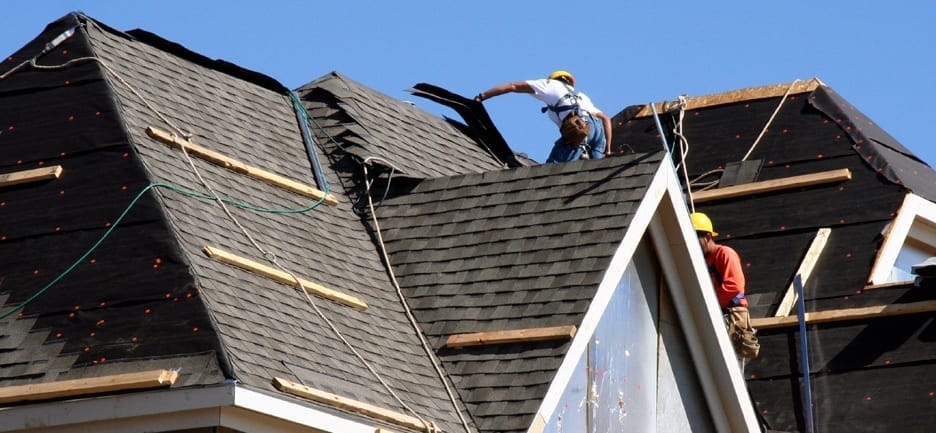Technical Truths Regarding the Finer Points of Asphalt Shingles
Contractors Ask IKO for the Truth About Asphalt Roofing Shingles
Experienced roofing contractors are a great source of information when homeowners need a straight answer about their roofs. But where do contractors get their facts? In part, they get their facts through experience and industry associations, but also to a large extent through the technical support, literature and interaction with their roofing material suppliers. It is not uncommon for contractors, once they have established a trusted relationship with a reliable manufacturer, to call their local sales reps or technical staff to clarify certain issues.
We’ve sampled some of the more frequent or interesting questions and associated answers below. For roofers just starting out in the business, these may be helpful in ensuring proper shingle installation. For veteran roofers, with the callouses to prove it, some of these will be good reminders of what has been learned the hard way. And if you’re a curious homeowner, a little background technical information on roofing may help you ask more relevant questions the next time you need a new roof.
- What is an algae-resistant shingle and should this shingle always be used in a wet climate?
- What are impact-resistant shingles and what does IKO offer to protect roofs against hail damage?
- Which shingle types are suitable for high-wind environments?
- Do all IKO shingle types and colors typically have matching hip and ridge shingles?
- What tools are available to visualize shingle colors on a house?
- When installing shingles on a high-pitched roof, how does installation differ?
- What is the IKO PROFORMAX Integrated Roofing Accessories?
- Why/when should I use an asphalt shingle underlayment?
- What are common areas to look for roofing shingle leaks?
- What offsets should be used for laminated shingles?
- Can shingles be installed during winter months and is there a recommended temperature minimum/maximum for installation?
- Does installing shingles in cold weather or high-wind areas require additional nails and sealant?
- How long can underlayment remain exposed before shingles are installed?
- Can different shingle types be mixed on a roof
- Can I apply new shingles over an existing layer of shingles?
- Is there a recommended way to install IKO shingles around roof features, such as vents and chimneys?
- Can solar panels be installed over IKO shingles?
- Do I need to use a roof starter?
- Will chemical ice melter or salt affect shingle performance, if used to try and melt snow and ice on shingles?
- What is color shading and how can it be minimized?
- Does IKO offer samples of shingles or other roofing products?
- What is a drip edge and how is it applied?
- Should vents and turbines be covered during the winter?
- Can IKO shingles be used for siding?
- Can heating coils be installed over IKO shingles to prevent ice dams?
- Does IKO sell metal valley flashing, step flashing, drip edges, vents or gutters?
- What is an algae-resistant shingle and should this shingle always be used in a wet climate?
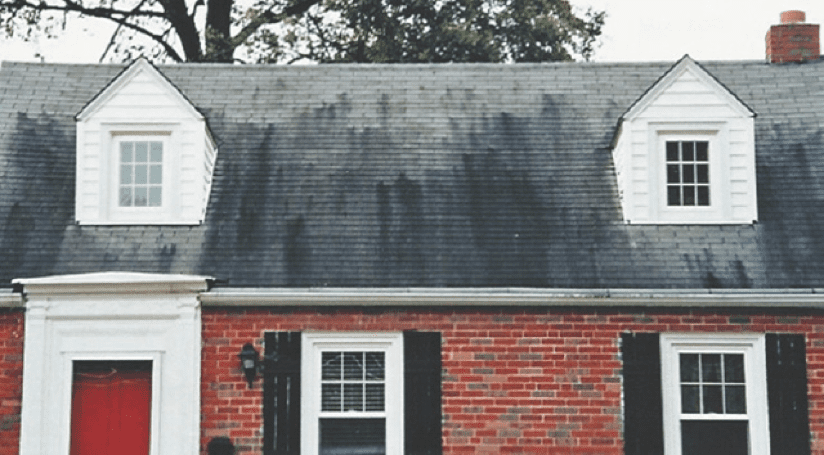
Many years ago, certain asphalt shingle roofs in wetter climates, particularly in U.S. Gulf coastal areas, developed black streaks and stains a few years after installation. Although not known to be detrimental to the performance of the asphalt shingle roof system, the streaks are considered by most people to be unsightly. It was determined that the stains were usually caused by blue-green algae growth, and that addition of a small amount of copper material to the colored shingle granule surfacing would inhibit this growth, virtually eliminating the source of the black stains. The algae stain phenomenon has spread to all regions, and in response, most shingles sold these days incorporate this treatment in the granule surfacing, including all IKO shingle brands, except Marathon 20. So, regardless of a wet coastal climate or a dryer continental climate, algae-resistant shingles are generally used everywhere by default.
- What are impact-resistant shingles and what does IKO offer to protect roofs against hail damage?
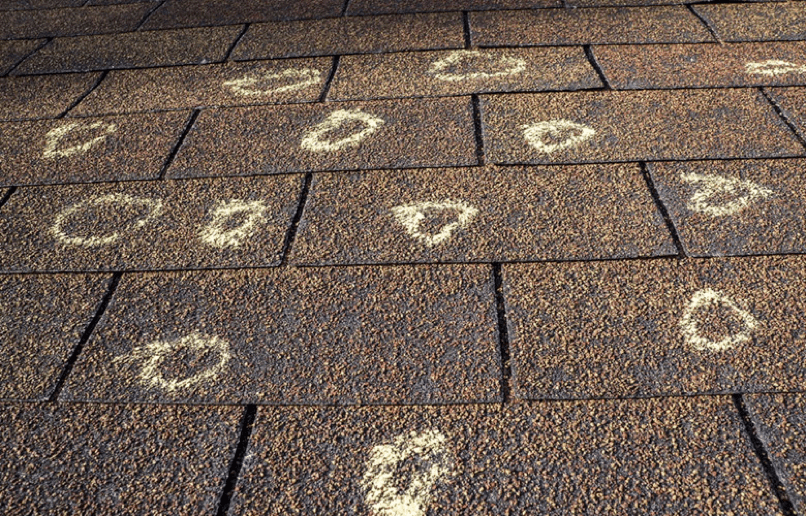
When hail falls and “impacts” the roof (along with all other surfaces exposed to the sky), there is potential for the hail to damage the shingles, possibly resulting in shortened roof service life. Due to the efforts of the insurance industry in cooperation with asphalt roofing professionals, tests have been developed that can assess whether certain singles have more resistance or less resistance to simulated hail impacts. If homeowners select shingles that have passed more stringent simulated hail impact tests, they may be entitled to rebates or discounts in their homeowner’s insurance policy. IKO has been manufacturing such impact-resistance rated shingles for many years in response to consumer demands. As a contractor, if your market area is in a region that experiences frequent hail storms, consider offering IKO’s Nordic shingles. This impact rating is solely for the purpose of enabling residential property owners to obtain a reduction in their residential insurance premium, if available. It is not to be construed as any type of express or implied warranty or guarantee of the impact performance against hail, of this shingle by the manufacturer, supplier or installer. Damage from hail is not covered under the limited warranty. For further details concerning the FM 4473 standards, visit the FM Approvals website.
- Which shingle types are suitable for high-wind environments?
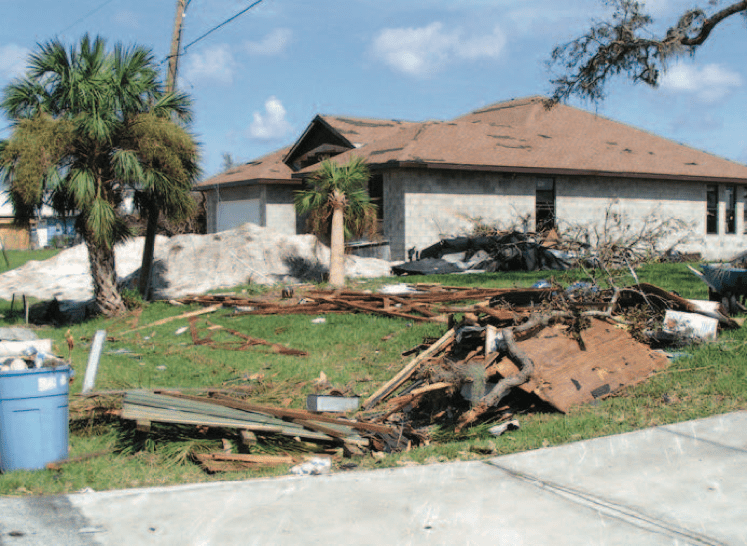
All IKO shingles are manufactured with a strip of specially formulated adhesive asphalt sealant applied to either the top or the back of the shingle, depending on the shingle type. When the shingles are installed and have been given an opportunity to seal such that the sealant bond is formed, the shingles have proven themselves to be resistant to wind lift. In fact, IKO shingles have been tested to, and have successfully passed, the highest wind tests in the industry, with select products suitable for the high-velocity hurricane zone in south Florida. IKO offers enhanced high-wind limited warranty coverage for all of its premium, performance and architectural shingle brands (see IKO’s limited warranty for details).; The IKO Performance category of shingles (Dynasty and Nordic) offer an enhanced nailing zone fortified with a reinforcing strip on the back of the shingle, and therefore the high wind limited warranty can be achieved without the need for additional fasteners.
- Do all IKO shingle types and colors typically have matching hip and ridge shingles?
In the “old days” when three-tab shingles dominated the asphalt shingle roofing market, hip and ridge shingles could be easily fashioned from the three-tab shingles by merely cutting the shingles into thirds. This was not only a relatively simple process, but also ensured that the color of the ridge caps matched the field shingles exactly. As the market for more aesthetically pleasing and varied dimensional/architectural shingles has grown, shingle manufacturers, roofers and homeowners have learned to adapt different cap shingle styles and colors.
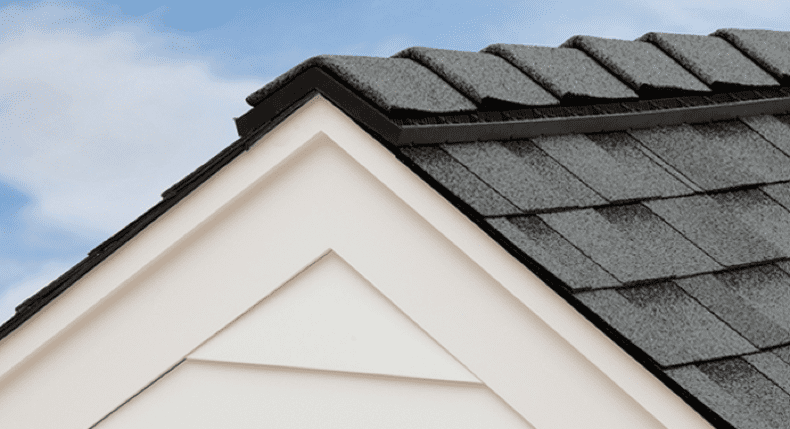
The newest ridge cap shingles may not be the identical color and granule blend of the field shingles, but their enhanced profile and complementing color schemes can further accentuate the rooflines and “frame” the finished roof. IKO continues to pioneer these roofing trends.
For an even greater degree of roof accent at hips and ridges, consider IKO’s Ultra HP, also available in complementary colors, and constructed in a high-profile, three-dimensional pre-folded shingle.
- What tools are available to visualize shingle colors on a house?

Most professional contractors have learned that nothing looks quite like an asphalt shingle as much as a real asphalt shingle — so they’re likely to carry a few shingle samples in the most popular colors found on homes in their area. As well, IKO offers sample boards that can help show a small section of a few shingle courses. Experienced pros will also have a list of addresses ready, perhaps from previously completed jobs, where homeowners can see an actual full roof done in the shingle and brand they may be considering. Perhaps the quickest, best and easiest way to visualize a proposed shingle color on your roof is with IKO’s easy-to-use ROOFViewer[reg] interactive shingle selector tool.
- When installing shingles on a high-pitched roof, how does installation differ?
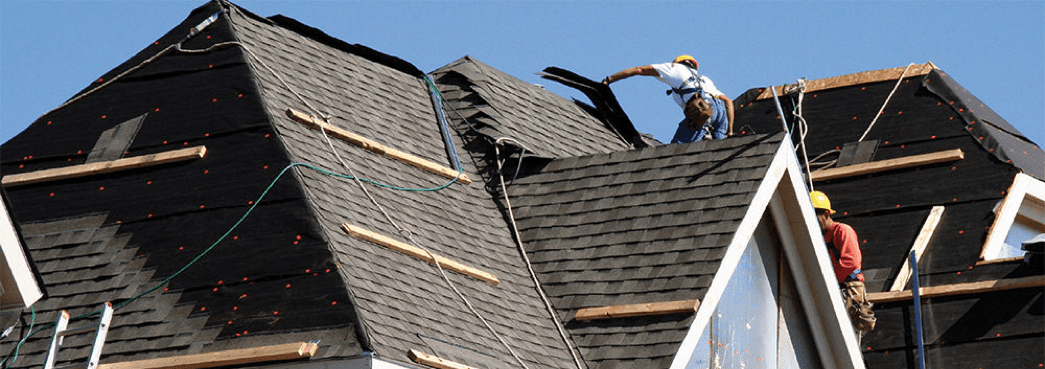
In this case, we’ll consider the question of “high pitched” to mean anything above 60 degrees, or 21:12 slope. On these steep roofs, it’s important to understand the effects of gravity on the shingles. Since these roofs will be much closer to vertical than the more common 5:12 and 6:12 slopes, the “weight” of each shingle as it lays on the shingle below will be lower. It’s that weight that normally ensures the shingle layers contact each other, helping to form the sealant bond. So, the first installation difference on steep slopes is that each shingle must be sealed down at time of application with three 1-inch (25 mm) diameter spots of roofing cement placed under the shingle 2 inches (50 mm) above the bottom edge and equally spaced along the shingle. Note that roofing cement should be used sparingly, as excessive amounts may cause blistering. As well, additional nails should be used on high-pitched roofs — the exact number and position of the additional nails will vary with the shingle being used, so always read and follow the installation instructions. For laminated shingles, nail placement is particularly critical to ensure both shingle layers are attached to the roof deck.
- What is the IKO PROFORMAX Integrated Roofing Accessories?
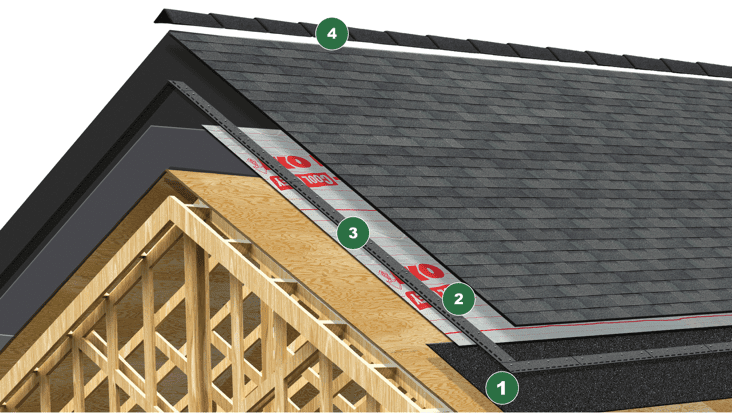
The IKO PROFORMAX Integrated Roofing Accessories is a fourfold system approach to providing optimum roof protection beyond a simple new application of shingles. Shingles alone are usually not enough to protect your home. IKO has developed superior multilayered roofing components for these vulnerable areas of your roof. As every professional contractor knows, an installed roof also consists of important accessory materials, such as eave protection membranes, underlayments, starter strips and ridge caps. IKO has grouped these products into a comprehensive promotional package that our contractors have successfully used in roof estimates to prospective customers. Click here for more detailed information on the PROFORMAX Integrated Roofing Accessories.
- Why/when should I use an asphalt shingle underlayment?
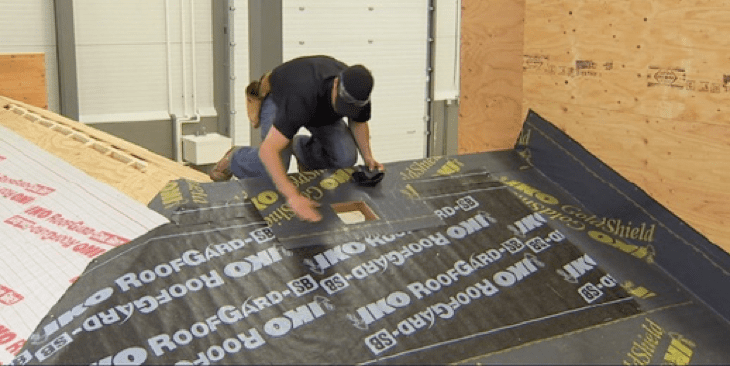
Let’s answer the “when” part first: Experienced contractors have learned that underlayments should always be used. There are a number of reasons for this, the primary one being that they are essentially required as a roof system component on all shingle roofs under U.S. and Canadian building codes. Building codes notwithstanding, considering the material cost for a layer of underlayment and the value they provide in terms of secondary roof protection, they are an excellent roof investment. As well, they are typically a required component in an asphalt shingle roof system’s fire-resistance rating. But don’t just take our word for it — find a useful industry bulletin on the benefits of underlayment use here.
- What are common areas to look for roofing shingle leaks?
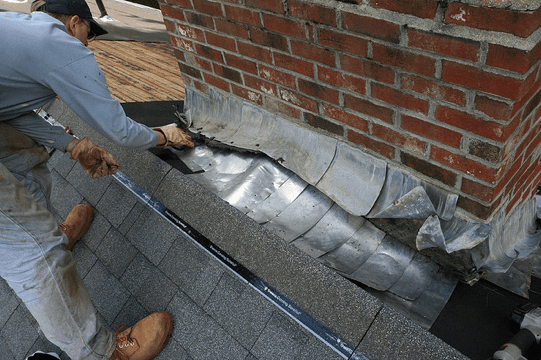
Roof leaks with properly installed asphalt shingles, especially when installed in conjunction with IKO’s PRO4 system components, are uncommon. And as veteran roofers and building inspectors know, it’s not always simple to connect the dots between where a leak is seen on a home’s interior and where the actual leak occurs in the roof. Since the shingles overlap and provide redundant layers on the roof, a true roof leak is usually found at a point of roof interruption or penetration. Antenna anchor points, skylights, poorly flashed roof vents and old chimney flashing are among the most common probable culprits. As well, look for areas of poor roof design, where intense roof drainage may overpower a valley, or in cold climates, where snow may accumulate in a wind-sheltered roof nook. Repairs for roof leaks will vary depending on the diagnosed cause. Repairs might simply entail replacing a weathered/loose flashing; however, chronic leaks from a roof design flaw may require more complex and expensive solutions.
- What offsets should be used for laminated shingles?
In the days of traditional three-tab shingles, it was possible for most shingle manufacturers to cite a standard, common offset dimension between shingles in adjacent courses (usually one-half of a tab width). This is not the case with the current generation of laminated shingles, which vary widely in shingle size, design and installation requirements. However, one of the cardinal rules of shingle installation still applies, and that is that shingles should be offset no less than 4 inches (100 mm) apart. Otherwise, that other cardinal rule applies — alwaysread and follow the printed installation instructions for the shingle being installed.
STEPS | ÉTAPE | PASO 9-13
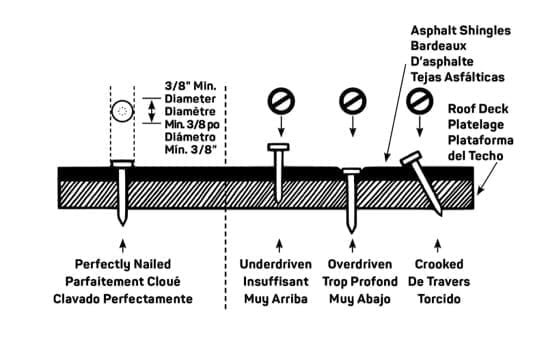
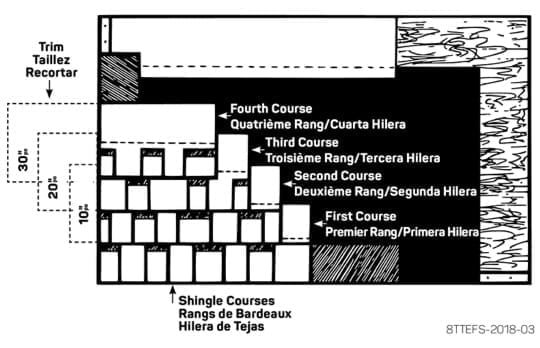
- Can shingles be installed during winter months and is there a recommended temperature minimum/maximum for installation?
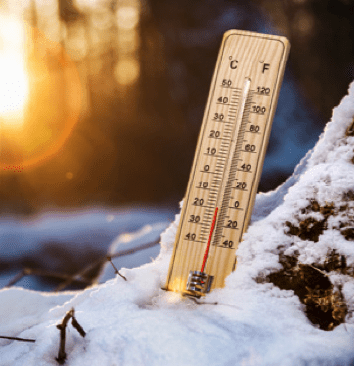
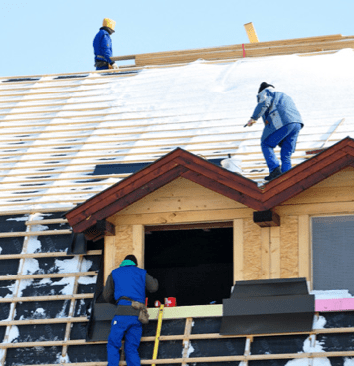
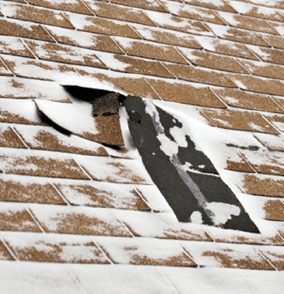
Here’s another age-old question. Some homeowners may be concerned to see their roofing contractor crew showing up at their home on a very chilly winter morning. However, asphalt shingles are relatively resilient products, and, with proper care, cold weather installation can be done successfully. One of the main concerns with cold weather roofing is not so much product issues, but rather a simple matter of roof safety, as walking on a frosted or icy roof deck is extremely dangerous. Since the shingle’s sealant is activated by solar warmth from sunlight, it may be necessary to manually seal the shingles to help ensure wind resistance until warmer weather occurs. As for an absolute lower temperature, one must consider the prevailing climate conditions altogether. For example, suppose two shingle installations are planned for early April — one in Kansas City and one in Calgary, Alberta. The temperature on installation day is about 40 F (5 C) in each location. But, during the next few days in Kansas City, the temperature may rise to the low 60s F, with little wind and sunny skies, and the weather will be sufficient for the shingles to seal. Calgary could subsequently get strong north winds, snow and temperatures falling below freezing, and the shingles would need to be manually sealed. So, consider the overall conditions, not just the temperature, during cold and hot shingle installations.
- Does installing shingles in cold weather or high-wind areas require additional nails and sealant?
The short answer here is that such practices are always a good idea, even if not mandatory according to local codes or the manufacturer’s installation instructions. And, as stated in the previous answer, consider the forecasted wind speeds/directions that may impact the shingles prior to sealant activation. Follow the shingle installation instructions, which will describe exactly when and how shingles must be installed in cold weather and high-wind areas.
- How long can underlayment remain exposed before shingles are installed?
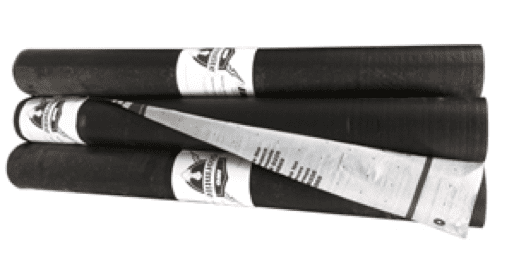
It depends on the underlayment used. Historically, asphalt saturated organic felt was the most commonly used underlayment. It was a dependable and robust underlayment; however, in extreme direct water wetting and drying cycles prior to shingle installation, it was susceptible to wrinkling and therefore, ideally, would be covered by asphalt shingles the same day. However, over the last decade or so, use of organic felts has diminished in favor of newer synthetic underlayments, which contain no asphalt at all. Most of these synthetic (plastic film) underlayments are dimensionally stable in changing moisture/temperature conditions and have a certain amount of UV resistance. All this combines to enable the membranes to be exposed for up to a few months prior to shingle installation. It is important to note that the underlayments are not designed to be exposed watershedding roofing materials, and when a manufacturer states it can be “left exposed for X months,” this simply means that being left exposed will not result in significant underlayment deterioration. It should not be interpreted to mean that the roof will be perfectly watertight during that time.
- Can different shingle types be mixed on a roof
Yes, but be careful. Many years ago, it was not uncommon to mix shingles on the same roof. Shingles of a certain shape or style or color could be added in a few horizontal courses to provide aesthetic designs and accents to the roof. It should be noted that these “mixed-in” shingles would typically be added in continuous courses, and not just randomly adjacent to shingles of other designs, as exposure and offset requirements of different shingle brands might not be identical. However, experienced roofers have had some success randomly mixing in different colors of the same shingle brand on the same roof – in these cases the colors must be complementary such that they provide an aesthetic contrasting accent.
- Can I apply new shingles over an existing layer of shingles?
Possibly. There are many inputs that need to be considered. Among them:
- Is the existing roof layer relatively flat? (If not, the new shingle layer will look distorted.)
- Does the local building code permit two roofing layers?
- Are there any obvious structural limitations or issues (sagging ridge line, rotted deck boards, etc.)?
If there are no code, structural or aesthetic concerns, history tells us that a second layer of shingles can function just fine. (Don’t forget to use longer nails!) However, it is also advisable to confirm with the shingle manufacturer’s limited warranty conditions to ensure there are no restrictions limiting warranty coverage in such situations.

- Is there a recommended way to install IKO shingles around roof features, such as vents and chimneys?
Installing shingles around roof structures and protrusions, such as vents and chimneys, can easily be handled with proper flashing and trimming of the abutting shingles. Although the basic steps for shingling around vents are common to all shingles, there are a number of them, which are described and shown in detail in these posted videos.
- Can solar panels be installed over IKO shingles?
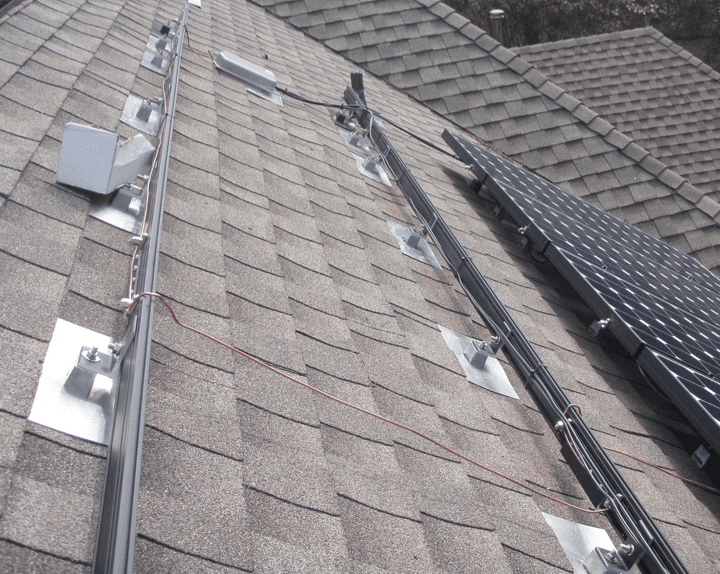
Various types of roof-mounted equipment have been installed over (and through) the shingle layer for many years. Solar panels are merely the latest in a long list of rooftop structures. As with all aspects of roof construction, compliance with any local building or fire codes should be checked. The specific procedures for mounting any solar panels will be dictated by the panel manufacturer; however, one basic principle still applies: Any brackets/screws/bolts that penetrate the shingles must be securely sealed against water entry. Typically, this is done via rubberized gaskets/washers and appropriate use of exterior grade caulks and sealants. For full installation details, consult the directions from the panel manufacturer.
- Do I need to use a roof starter?
Yes — a roof starter strip is an essential element of a correctly installed shingle roof system. Without a starter strip, there is a likelihood of water entry and roof deck deterioration at any end joints of shingles in the first course. Those shingle joints need the protection provided by the starter strip. As well, the starter strip will have a sealant strip along the lower eave edge, ensuring the first course shingles can be well-sealed once warmed by the sun.
- Will chemical ice melter or salt affect shingle performance, if used to try and melt snow and ice on shingles?
Occasionally in the past, roofers and homeowners have tried to minimize ice formation on the roof (or accelerate its melting) by applying ice melting granules or salt. The shingles themselves are essentially unaffected by these materials. Just as asphalt pavement is resistant to salt, so too are asphalt shingles. However, if too much of these chemicals are applied, they can leave a residue on the shingles long after the ice is gone. Although the salty residue will eventually weather off with rain and sun cycles, until then, it may detract from the overall roof appearance. Also, consideration should be given to the downstream effect salty roof water run-off will have on eavestrough materials and ground-level vegetation.
- What is color shading and how can it be minimized?
In the shingle manufacturing process, the ceramically colored shingle granules are mixed to precise ratios, then distributed into the hot asphalt coating and embedded into that coating while the roofing sheet is still warm. The granules are themselves produced to exact color specifications. However, despite computer controls and quality control evaluations, the degree and angle of granule embedment in the shingle can slightly alter how the shingle surface reflects sunlight. This phenomenon can give the appearance of different shades of shingles on the roof (much in the same way a suede fabric, although uniform in color, can look darker or lighter depending on which direction it is brushed). Experienced installers have learned that the appearance of shading can be minimized by always installing shingles according to the manufacturer’s instructions and mixing shingles from different bundles where needed.
- Does IKO offer samples of shingles or other roofing products?
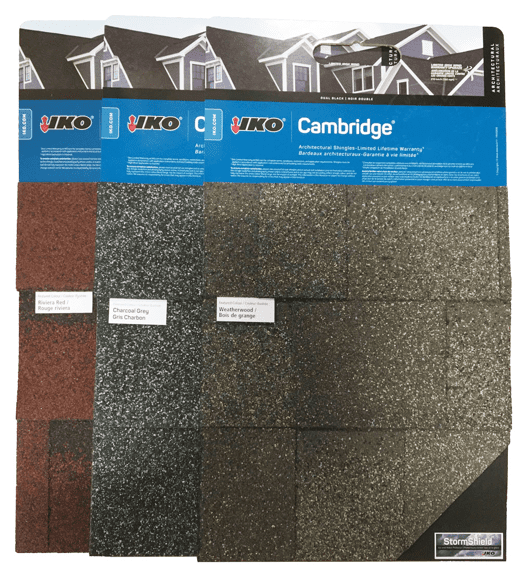
Generally, your local roofing material distributor offers full-size shingle samples, taken from opened/returned shingle bundles. Shingle sample boards are also available from IKO, which are useful to show the basic shingle installation pattern as well as available colors and applicable specifications. These can be used in conjunction with IKO’s literature and their innovative ROOFViewer app to help homeowners make their shingle style and shingle color selections. As well, small samples of IKO’s underlayment and ice and water protector products are also available.
- What is a drip edge and how is it applied?
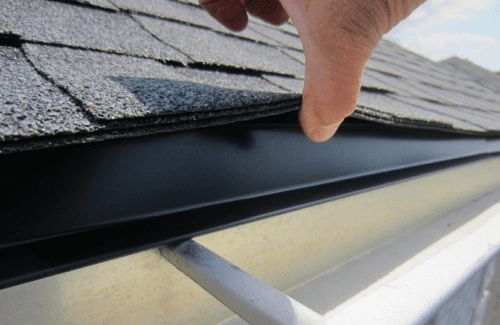
Although rain water will ultimately drain off the roof at the roof edges, to ensure a clean edge to the roof, a drip edge should be used at the eave and gable (rake) edges. Drip edges are narrow, thin strips of material of varying profiles applied at roof edges, and the ones used today are most commonly made of pre-painted metal. The drip edge also helps protect the edge of the wooden roof deck boards, preventing water from “wicking” into the edge. Drip edges are installed with roofing nails and applied directly to the deck at the eave edges, and on top of any ice and water protectors or underlayments at rake edges.
- Should vents and turbines be covered during the winter?
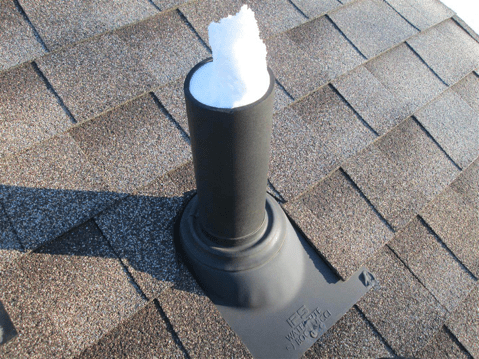
Roof vents are designed such that snow is usually prevented from entering the attic, except perhaps in the most extreme weather occurrence. And since vents still need to perform their function regardless of exterior weather, it is not recommended to cover vents in winter. If heating the interior home space is a challenge in winter due to a cold attic, the best solution would be to add insulation to the attic floor, being careful that additional insulation doesn’t interfere with air movement at soffit vents.
- Can IKO shingles be used for siding?
While asphalt shingles are commonly used on near-vertical mansard roof “walls,” they are typically not used as exterior wall cladding at ground level. Generally, wall cladding (including siding) must meet certain building and fire codes specifically designed for building protection. Since shingles are designed for roof exposure, they likely will not meet wall cladding requirements. As well, walls are often subjected to non-weather effects, from hockey pucks to climbing plants, which may compromise the shingles.
- Can heating coils be installed over IKO shingles to prevent ice dams?
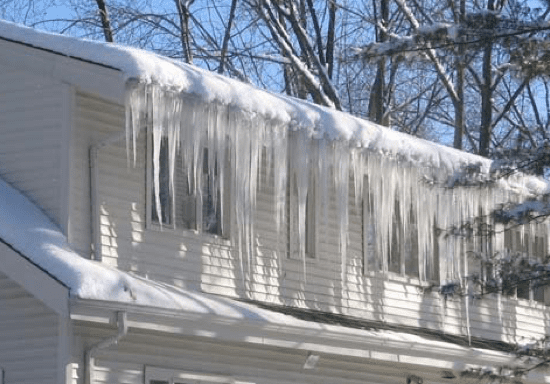
In cold climates, ice dams are best prevented through proper roof and building design and construction. Specifically, adequate and thorough ventilation, a properly installed and contiguous vapor barrier above the home’s living space, and sufficient insulation on the attic floor to prevent heat rising up to the underside of the roof deck. Added protection is also provided by properly installed ice and water protector membranes. However, occasionally, until construction remediation can be done (e.g., added vents or insulation), and where building geometry simply results in unavoidable pockets of drifting snow and ice accumulation, deicing cables may help alleviate ice dam formation.
- Does IKO sell metal valley flashing, step flashing, drip edges, vents or gutters?
IKO does not make or sell any of these roofing materials. However, these can typically be purchased wherever IKO roofing materials are sold.
Roofing professionals should be careful about believing everything posted regarding “technical” information on asphalt shingles. Tales and lore from old-time roofers can be a great way to transfer learning and knowledge. But, as time, technology and product designs have evolved, it’s best to get the straight facts from an established, diversified and vertically integrated roofing materials manufacturer, such as IKO. Since IKO has been manufacturing roofing products for over three generations, and since they make and process almost all the raw materials that go into shingles, they can be relied upon for sound information. Many misconceptions and myths exist based on outdated or inaccurate assumptions and rumors, so please visit our learning center for helpful information on asphalt shingle roofs!

